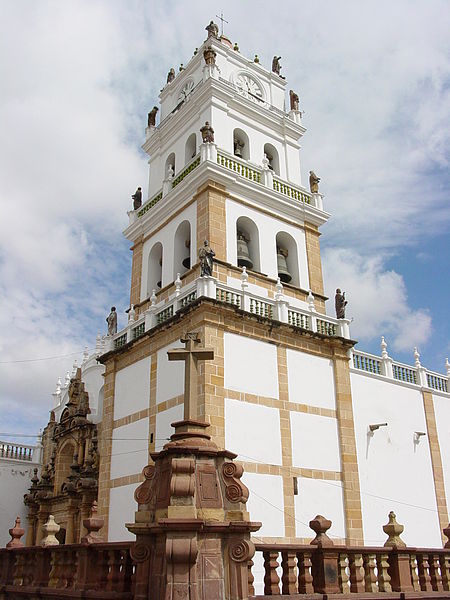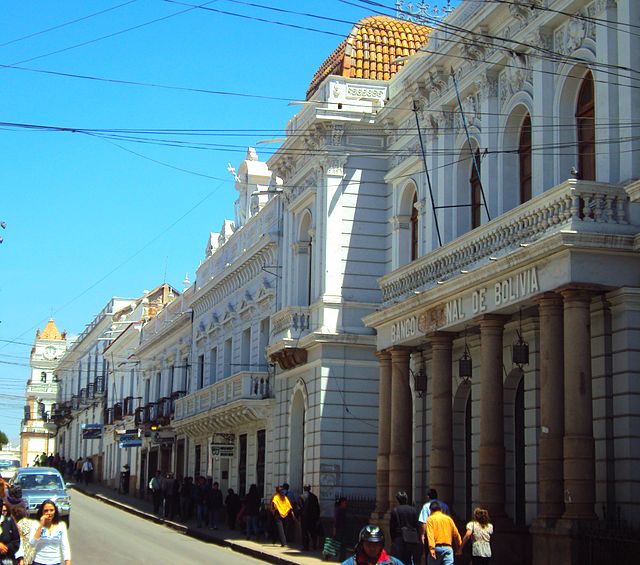La Paz, officially Nuestra Señora de La Paz, is the seat of government of the Plurinational State of Bolivia. With an estimated 816,044 residents as of 2020, La Paz is the third-most populous city in Bolivia. Its metropolitan area, which is formed by La Paz, El Alto, Achocalla, Viacha, and Mecapaca makes up the second most populous urban area in Bolivia, with a population of 2.2 million, after Santa Cruz de la Sierra with a population of 2.3 million. It is also the capital of the La Paz Department.
Image: Edificios de la ciudad de La Paz desde Plaza Murillo 2018 (cropped)
Image: Noon, Plaza Murillo, La Paz, Bolivia (14689720998)
Image: Jaén y Armentia
Image: Linea Roja de Mi Teleferico, La Paz
Bolivia, officially the Plurinational State of Bolivia, is a landlocked country located in western-central South America. It is bordered by Brazil to the north and east, Paraguay to the southeast, Argentina to the south, Chile to the southwest, and Peru to the west. The seat of government and administrative capital is La Paz, which contains the executive, legislative, and electoral branches of government, while the constitutional capital is Sucre, the seat of the judiciary. The largest city and principal industrial center is Santa Cruz de la Sierra, located on the Llanos Orientales, a mostly flat region in the east of the country.
The colonial Mint of Potosí
Metropolitan Cathedral of Sucre in Sucre, a UNESCO World Heritage city.
Historic headquarters of Banco Nacional de Bolivia in Sucre
In 1971 Hugo Banzer Suárez, supported by the CIA, forcibly ousted President Torres in a coup.








